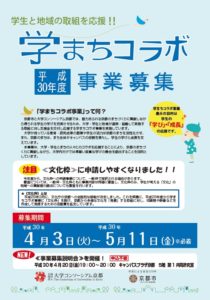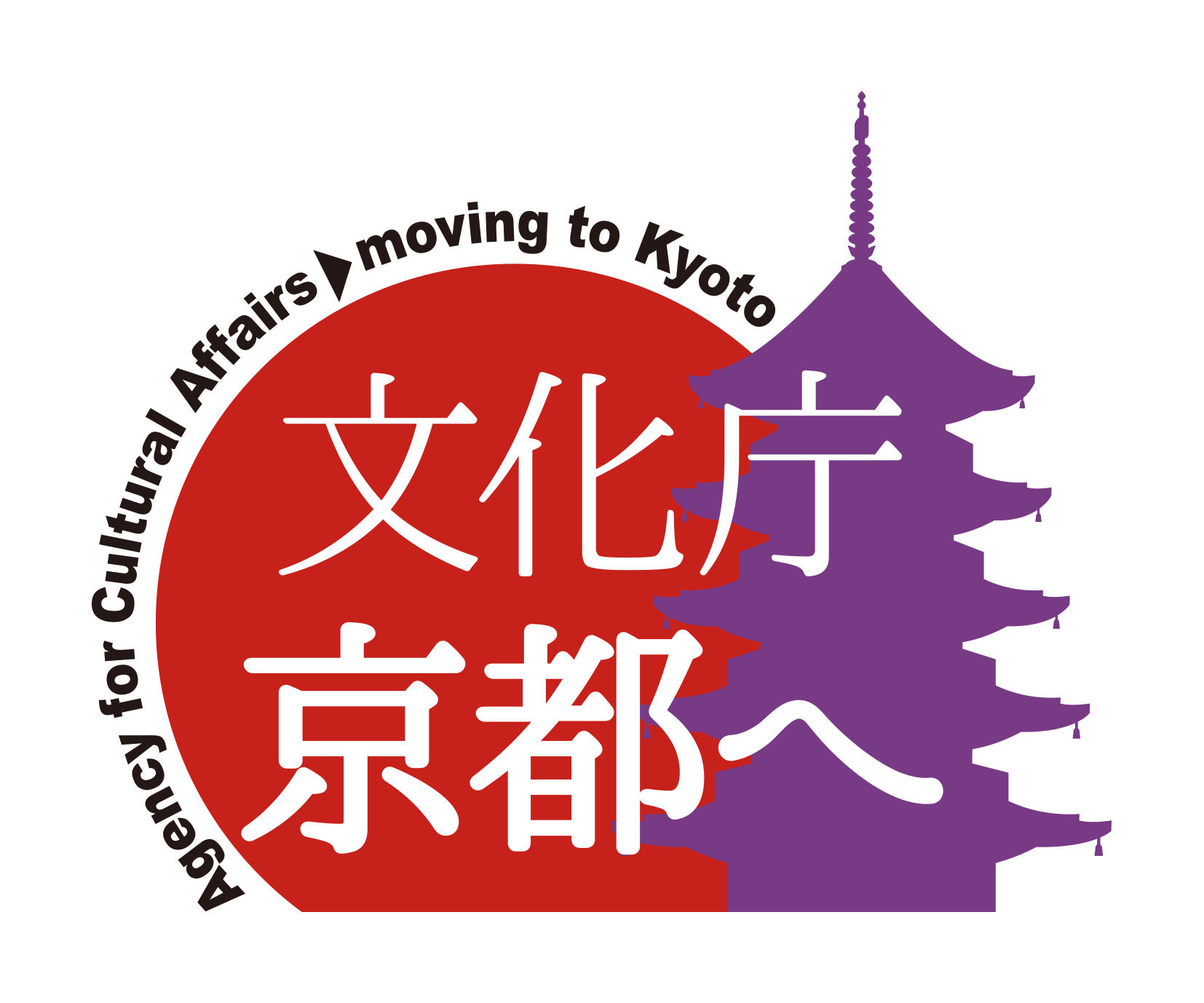 Kyoto City and the University Consortium Kyoto are implementing the “University Regional Collaboration Creation and Support Project (nicknamed the Gakumachi Collaboration Project)” to support the efforts by granting support funds to projects and projects that work on urban development and regional revitalization in Kyoto through “collaboration” between universities, students, and local communities.
Kyoto City and the University Consortium Kyoto are implementing the “University Regional Collaboration Creation and Support Project (nicknamed the Gakumachi Collaboration Project)” to support the efforts by granting support funds to projects and projects that work on urban development and regional revitalization in Kyoto through “collaboration” between universities, students, and local communities.
This year marks the 15th year of the program, with the aim of developing human resources by securing practical education and research opportunities for universities, and for local communities, solving local issues and revitalizing them through the knowledge of the university and the vitality of students.
We are pleased to announce that we will start recruiting for the 30th academic year, so please check the following guidelines before applying.
|
NEW It has become easier to apply for the ≪Cultural Framework≫ From this fiscal year, projects that apply for the cultural category may be selected in the general category. As for the judging, the content of the projects will be judged in the same way for both the general and cultural categories, and only the cultural category will be judged from the perspective of the student’s degree of contribution to the local community.
|
Target Businesses
For the purpose of solving local issues and revitalizing the city of Kyoto, projects that fall under the following requirements ((1) and (2) for the general category and (1), (2), and (3) for the cultural framework) to be implemented in Kyoto City during the Heisei 30 fiscal year (from the date of adoption to the end of March of the following year) are eligible.
However, political activities, religious activities, activities that promote specific ideas, violent or destructive activities, commercial businesses, etc. are excluded.
* Projects applied for the cultural category may be selected in the general category.
* Projects applied for the general category will not be selected for the cultural category.
[Common requirements for general and cultural frameworks]
(1) Projects in which universities and student groups and local communities (residents’ organizations, civic activity groups, businesses, etc., mainly in the Kyoto City area) collaborate and collaborate as organizations and groups, and in particular, students take the initiative in their activities.
* Administrative agencies may be included as collaborators, but cooperation with administrative agencies alone is not possible.
Examples: Health and welfare, social education, community development, promotion of academic, cultural, artistic or sports, environmental conservation,
Surveys and research in various fields such as community safety, citizen lectures, events, etc.
(2) Those who have not received any subsidies or subsidies from Kyoto City other than the Gakumachi Collaboration Project.
[Requirements for the cultural quota only]
(3) Priority theme: “Culture of the region”*
In addition to the requirements of (1) and (2), it is necessary to dig up the culture that lies dormant in the region and to pass on the culture that has been passed down from generation to generation in the region.
Projects that work on dissemination to preserve for the future, or to create a new culture through the knowledge of the university and the vitality of its students.
Businesses to work on.
In order to inherit and archive local culture, it is necessary to disseminate the results of activities in print and video.
* “Culture” includes lifestyles and customs such as art, performing arts, events, industry, food, clothing, housing, etc., as well as old and new.
There are diverse aspects.
Universities, student groups, and the local community themselves should carry out activities from the perspective of “this is culture.”
Target Organizations
Organizations and groups of University Consortium, Kyoto member universities and junior colleges (*1)
or
A local organization that mainly works in the Kyoto city area (*2)
(*1) University departments, laboratories, seminars, clubs, student circles (circles composed of students from multiple universities are also acceptable), etc.
*2 Residents’ organizations such as residents’ associations and neighborhood associations, civic activity groups, groups and groups consisting of businesses, etc. (shopping streets, etc.)
Amount and number of donations
General category: Up to 300,000 yen / about 15 cases
Cultural quota: Up to 450,000 yen / about 2 projects
* However, if you apply for the cultural quota, you will be required to use the support money to create deliverables such as printed materials and videos so that it will lead to the inheritance and dissemination of culture.
* In addition, at the project report meeting scheduled to be held in March 31, the implementing organization (1 organization) that is recognized as the most excellent will be commended (certificates, trophies, and activity incentives of 100,000 yen will be issued separately).
About the application
Application Period
Tuesday, April 3, 2018 ~ Friday, May 11, 2018
* If you send it by mail, it must arrive on the same day, and if you bring it by 5 p.m.
How to apply: Step 1 Before you start writing your application
It is recommended to read the master plan of the administrative district in which the activity will be carried out. In addition, please listen to the opinions of local people and related government agencies as much as possible regarding the background of the project implementation and the needs of the community. If you have any questions about the basic plan of the ward or points to keep in mind when working in the community, you can also consult with the Regional Power Promotion Office of each ward office or branch.
In addition to reconfirming and sharing your objectives and goals, let’s discuss and think again about whether the business you are thinking about is the best way to achieve your goals. In addition, with regard to continuing projects, let’s thoroughly summarize the efforts we have made so far.
How to apply: Step 2 Let’s write an application!
● Application form (Word link)
● Application form (example)
|
Points to fill in |
○ Let’s check the judging criteria! In particular, the first screening is all about the submitted documents. Let’s find out what criteria are used to judge the case. ○ What is the purpose of the project? Write down your purpose and local needs. The group that listened to the opinions of local people and ward offices in step 1 should also write the contents. ○ Who are you collaborating with? What does each of them do? Let’s be specific. The Gakumachi Collaboration emphasizes learning that can be obtained by collaborating with the university, students, and the community toward the same goal. If a student group is applying, write down what role the partner will play, and if a local organization is applying, write down what the student will do independently. |
How to apply: Step 3 Register your business outline
Please register your business outline using the form below.

How to apply: Step 4 Submission of application documents
Please submit it by mail or bring it to the following address within the application period.
(1) 10 copies of application documents * If there are reference materials (up to 10 sheets), submit 10 copies of reference materials
(2) Application document data (MS-Word) * If reference materials are available, submit the reference data as well.
* Please do not change the prescribed form downloaded from the University Consortium Kyoto website for both (1) and (2).
Main Schedule for the Future
1st screening: After the application deadline ~ mid-June *Document screening
Second screening: June 24, 30 (Sunday) * Public presentation screening
Notification of support project decision and selection results: Early July 30
Approval formula: Early ~ mid-July 30 * A certificate will be issued by Kyoto City for the selected project.
Interim report: Mid ~ end of October 30 * Submission of documents
Final report: March 31 * Submission of documents
Announcement: Mid ~ end of March 31
Where to submit application documents and inquiries
University Consortium Kyoto Gakumachi Collaboration Project
TEL :075-353-9130 FAX: 075-353-9101
MAIL:gakumachi-admin-ml■consortium.or.jp
(Please change ■ to @ and send)
〒600-8216 Shimogyo-ku, Kyoto-shi, Nishitoin-dori, Shiokoji, Shimo-ku, Kyoto, Campus Plaza Kyoto
* Reception hours: Tuesday ~ Saturday 9:00 ~ 17:00
















